View on Campus: Mounted


We had a hard time deciding which panorama to use to showcase our work, so we are using two. One is a full 360 panorama taken in campus behind the Allen building and the other is not a full 360, but it’s a simply awesome looking panorama of Seattle from Kerry park.
House: Handheld

Leon took a couple of pictures outside his dorm, but we couldn’t get a good stitch because there was one pair of pictures where there was a huge jump between them (and it would be difficult for a human to match too). We didn’t have our previous camera, so Vaibhav decided to use his own camera to take pictures outside his home and played around with the focal length and distortion parameters until he got a decent looking panorama. The plus is that it’s a 360 degree image.
Test sequence
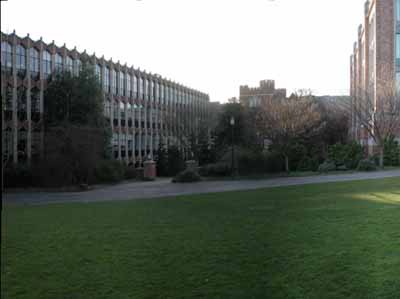
We got a slightly different one than with the test solution. The test solution seemed to drop the last image in the sequence, whereas, we ignore the first image in the sequence. This is not an issue with a 360 panorama since you can duplicate the first image at the end.
Notes
Overall, this project was a bit lengthy, but very educational. It was fun creating a feature descriptor and seeing it work so well. I still have trouble wrapping my head around how the spherical warp worked, but I hope this gets clear in the coming few projects. Overall, I think programming is the right way to drill in concepts you learn in class, so thanks for the opportunity! - Vaibhav
It is really a fantastic project since now I can in some sense help my friends stitch multiple pictures and creat panaramas without an advanced camera, which is really cool in really life. I have tried thinking about how panarama works before and could find a correct answer, but now I know. Spherical warp is a new idea to me as well as an important step of achieving that. I find it hard to understand the matrix stuff of this kind of warping. I think I should figure it out completely later. After finishing this project, I know that understanding what the skeleton code is doing is an indispensable step before writing new code. -Leon
Extra Credit
We wrote features that are illumination invariant. This is achieved by normalizing intensities by subtracting the mean and dividing by the standard deviation.
Curves
Yosemite Images
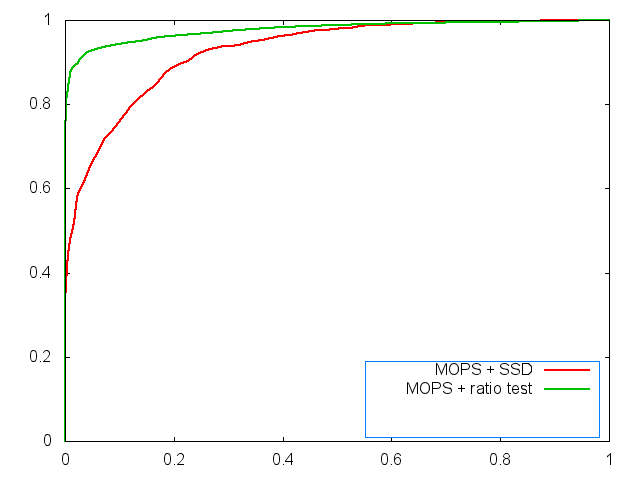
We got a good ROC curve for the Yosemite image.
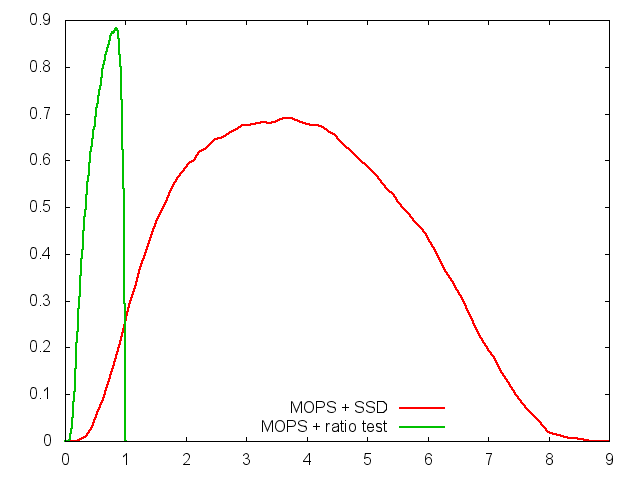
The optimal threshold for ratio test is: 0.8.
The optimal threshold for SSD test is: 3.5
graf Images
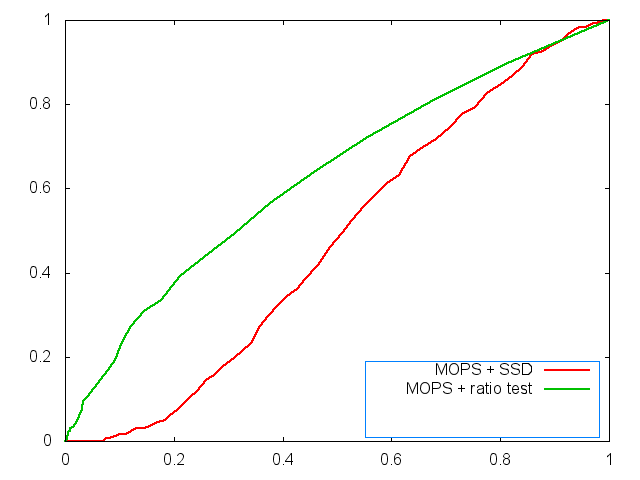
The ROC curve for this wasn’t too impressive.
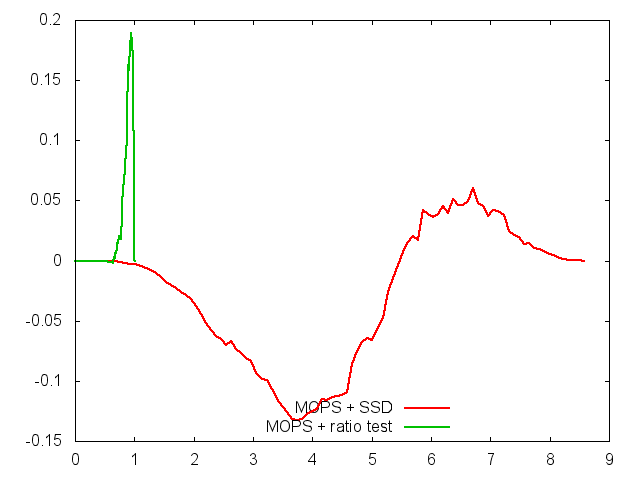
The optimal threshold for ratio test is: 0.9
The optimal threshold for SSD test is: 6.8
From the curves, it looks like the threshold curve is the first derivative of the ROC curve.
Harris
Yosemite Images

graf Images
